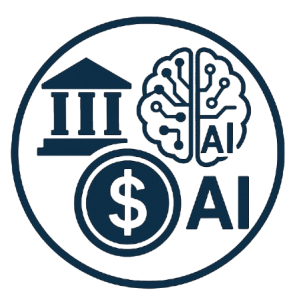Understanding the Core Objectives of Fiscal Policy
Fiscal policy, the use of government spending and taxation to influence a nation’s economy, is a crucial tool in the hands of policymakers. Its objectives are multifaceted, aiming to stabilize the economy, promote sustainable growth, and ensure a fairer distribution of income. Successfully navigating these objectives requires a delicate balance, as actions taken to achieve one goal can sometimes impact the others. This article delves into the core objectives of fiscal policy, exploring how governments attempt to manage their economies through strategic spending and taxation.
Stabilizing the Macroeconomy: Taming the Economic Beast
One of the primary aims of fiscal policy is macroeconomic stabilization. This involves smoothing out the business cycle, mitigating the effects of recessions and booms. When an economy slows down, governments can implement expansionary fiscal policy by increasing spending (e.g., infrastructure projects) or cutting taxes. This injects money into the economy, boosting demand and encouraging businesses to invest and hire, ultimately pulling the economy out of the slump. Conversely, during periods of rapid economic growth that threaten to overheat and cause inflation, governments can use contractionary fiscal policy. This involves reducing spending or raising taxes, thereby curbing demand and preventing prices from spiraling out of control. For instance, increasing taxes on high-income earners can help cool down an overheated housing market. The challenge lies in timing these interventions effectively, as there can be significant lags between policy implementation and its impact on the economy. Overdoing expansionary policy can lead to inflation, while excessive contraction can trigger a recession.
Promoting Economic Growth: Planting the Seeds for Prosperity
Beyond stabilization, fiscal policy plays a vital role in promoting long-term economic growth. Strategic government investments in education, research and development (R&D), and infrastructure can significantly boost a nation’s productive capacity. Investments in education, for example, create a more skilled workforce, enhancing productivity and innovation. Similarly, government funding for R&D can lead to technological breakthroughs, driving economic progress. Infrastructure projects, such as building roads and bridges, facilitate trade and commerce, reducing transportation costs and connecting businesses to new markets. These investments often have long-term positive effects, fostering a more robust and resilient economy. However, the effectiveness of these investments depends on careful planning and efficient execution. Poorly designed or mismanaged projects can waste resources and fail to deliver the intended benefits. It’s also important to consider the financing of these investments. Borrowing to fund them can increase government debt, which may have negative consequences in the future.
Redistributing Income: Bridging the Gap Between Rich and Poor
Fiscal policy also serves as a powerful tool for redistributing income and reducing inequality. Progressive taxation, where higher earners pay a larger percentage of their income in taxes, is a common mechanism for funding social programs and providing assistance to low-income households. These programs can include unemployment benefits, food stamps, and affordable housing initiatives. By transferring resources from the wealthy to the less fortunate, governments can help create a more equitable society and reduce poverty. However, the design of these policies must be carefully considered to avoid unintended consequences. Excessively high tax rates can discourage work and investment, potentially hindering economic growth. Similarly, poorly designed welfare programs can create dependency and disincentivize work. Finding the right balance between redistribution and economic efficiency is a key challenge for policymakers. It’s also worth noting that the effectiveness of income redistribution policies depends on the overall economic context. A growing economy provides more opportunities for everyone, while a stagnant economy can exacerbate inequalities. For more on the impact of economic trends, see further analysis of global economic indicators.
The Interplay of Fiscal Policy and the National Debt
The financing of fiscal policy initiatives often involves borrowing, which contributes to the national debt. While borrowing can be necessary to fund important investments and respond to economic crises, it’s essential to manage debt levels responsibly. High levels of national debt can lead to higher interest rates, making it more expensive for businesses and individuals to borrow money. This can stifle economic growth and reduce overall prosperity. Furthermore, a large national debt can make a country more vulnerable to economic shocks and financial crises. Policymakers must therefore strike a balance between using borrowing to achieve their fiscal objectives and maintaining a sustainable level of debt. This requires careful planning, responsible spending, and a commitment to fiscal discipline. Some argue that focusing on investment that produces future growth helps mitigate the risk associated with debt.
Challenges and Considerations in Implementing Fiscal Policy
Implementing effective fiscal policy is not without its challenges. One of the biggest hurdles is the political dimension. Fiscal policy decisions often involve trade-offs and compromises, which can be difficult to navigate in a polarized political environment. Different political parties may have different priorities and preferred approaches to fiscal policy, leading to gridlock and inaction. Another challenge is the difficulty of accurately forecasting economic conditions. Economic models are not perfect, and unforeseen events can significantly impact the economy, making it challenging to design and implement effective fiscal policy. Finally, there is the issue of time lags. The impact of fiscal policy can take time to materialize, making it difficult to assess the effectiveness of specific measures. Despite these challenges, fiscal policy remains an essential tool for managing a nation’s economy and promoting the well-being of its citizens. By carefully considering the objectives of fiscal policy and implementing measures in a responsible and sustainable manner, governments can create a more stable, prosperous, and equitable society.












